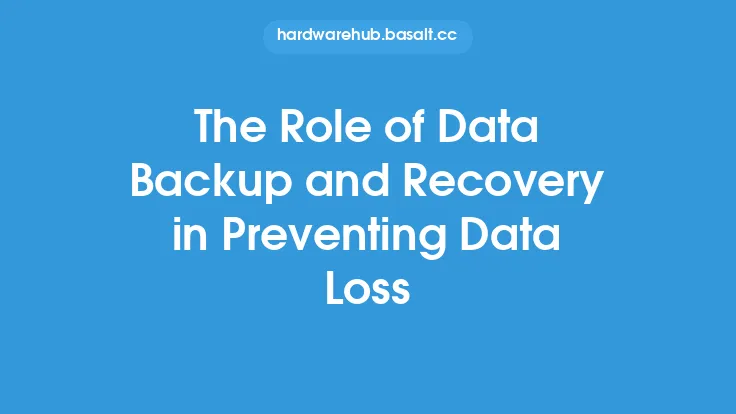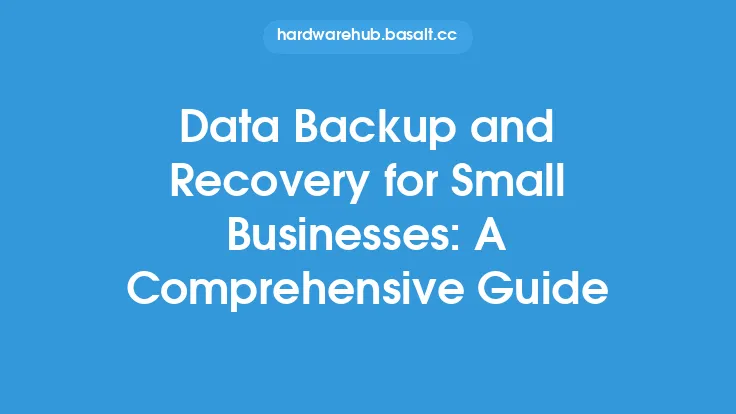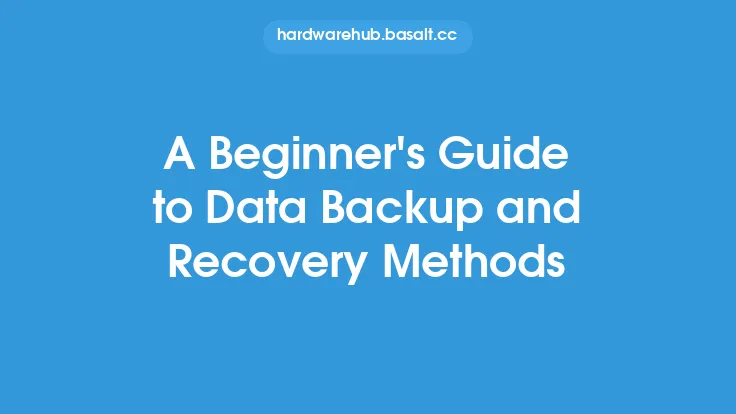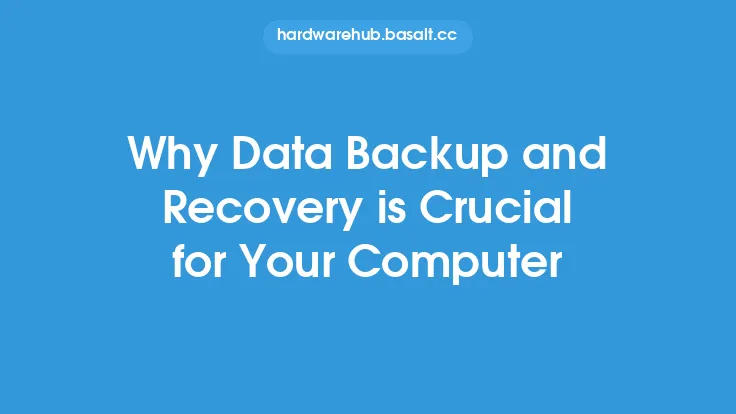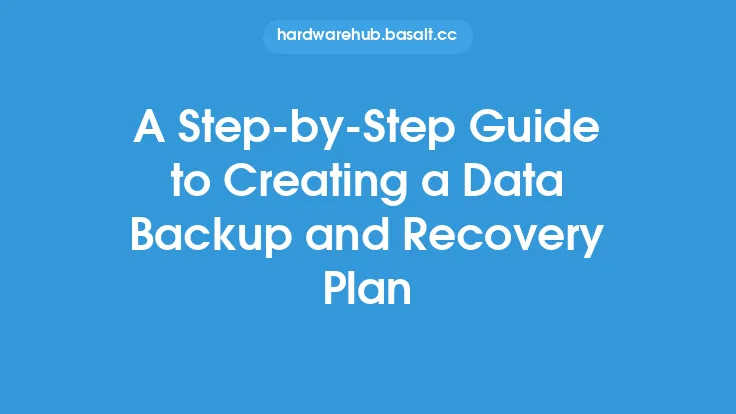In today's digital age, data is the lifeblood of any organization, and losing it can be catastrophic. Disasters, whether natural or man-made, can strike at any time, leaving businesses and individuals vulnerable to data loss. This is where data backup and recovery come into play, providing a safety net to ensure that critical information is protected and can be restored in the event of a disaster. In this article, we will delve into the best practices for data backup and recovery, providing a comprehensive guide on how to prepare for and respond to disasters.
Understanding the Importance of Data Backup and Recovery
Data backup and recovery are essential components of any disaster recovery plan. A data backup is a copy of the data that is stored in a separate location, such as an external hard drive, cloud storage, or tape drive. This copy can be used to restore the data in the event of a disaster, ensuring that business operations can continue with minimal disruption. Data recovery, on the other hand, refers to the process of restoring the data from the backup copy. This can be a complex process, requiring specialized software and expertise.
Best Practices for Data Backup
To ensure that data is properly backed up, several best practices should be followed. First, it is essential to identify the critical data that needs to be backed up. This includes financial records, customer information, and other sensitive data. Next, a backup schedule should be established, with backups performed regularly, such as daily, weekly, or monthly. The backup media should be stored in a secure location, such as a fireproof safe or an offsite storage facility. It is also important to test the backups regularly to ensure that they are complete and can be restored successfully.
Data Backup Methods
There are several data backup methods available, each with its own advantages and disadvantages. One common method is disk-to-disk backup, where data is backed up to an external hard drive or solid-state drive. This method is fast and efficient but requires a significant amount of storage space. Another method is disk-to-tape backup, where data is backed up to a tape drive. This method is more cost-effective but slower than disk-to-disk backup. Cloud backup is also becoming increasingly popular, where data is backed up to a cloud storage service, such as Amazon S3 or Microsoft Azure. This method provides greater flexibility and scalability but requires a reliable internet connection.
Data Recovery Best Practices
In the event of a disaster, data recovery is critical to getting business operations back up and running. Several best practices should be followed to ensure successful data recovery. First, it is essential to have a data recovery plan in place, which outlines the steps to be taken in the event of a disaster. This plan should include the location of the backup media, the software and hardware required for recovery, and the personnel responsible for the recovery process. Next, the backup media should be stored in a secure location, such as a fireproof safe or an offsite storage facility. It is also important to test the backups regularly to ensure that they are complete and can be restored successfully.
Technical Considerations for Data Backup and Recovery
From a technical perspective, data backup and recovery require careful consideration of several factors. One key factor is data compression, which reduces the size of the data to be backed up, making it faster and more efficient. Data encryption is also essential, as it protects the data from unauthorized access. Another factor is data deduplication, which eliminates duplicate copies of data, reducing storage requirements. In terms of hardware, the choice of backup device is critical, with options including external hard drives, tape drives, and solid-state drives. The software used for backup and recovery is also important, with popular options including Veritas NetBackup, IBM Spectrum Protect, and Veeam Backup & Replication.
Cloud-Based Data Backup and Recovery
Cloud-based data backup and recovery are becoming increasingly popular, offering greater flexibility and scalability than traditional backup methods. Cloud storage services, such as Amazon S3, Microsoft Azure, and Google Cloud Storage, provide a secure and reliable location for storing backup data. Cloud-based backup software, such as Druva, Commvault, and Acronis, provide automated backup and recovery capabilities, making it easier to manage and restore data. However, cloud-based backup and recovery also require careful consideration of security and compliance issues, such as data encryption and access controls.
Disaster Recovery Planning
A disaster recovery plan is essential for ensuring that business operations can continue in the event of a disaster. This plan should include several key components, including a risk assessment, a business impact analysis, and a recovery strategy. The risk assessment identifies the potential risks and threats to the organization, while the business impact analysis evaluates the potential impact of a disaster on business operations. The recovery strategy outlines the steps to be taken in the event of a disaster, including data recovery, system restoration, and personnel deployment.
Testing and Maintenance
Finally, testing and maintenance are critical components of any data backup and recovery plan. Regular testing of backups ensures that they are complete and can be restored successfully, while maintenance activities, such as software updates and hardware checks, ensure that the backup and recovery systems are functioning properly. It is also essential to review and update the disaster recovery plan regularly, to ensure that it remains relevant and effective.
In conclusion, data backup and recovery are critical components of any disaster recovery plan, providing a safety net to ensure that critical information is protected and can be restored in the event of a disaster. By following best practices for data backup and recovery, organizations can minimize the risk of data loss and ensure business continuity. Whether using traditional backup methods or cloud-based solutions, careful consideration of technical, security, and compliance issues is essential for successful data backup and recovery.
